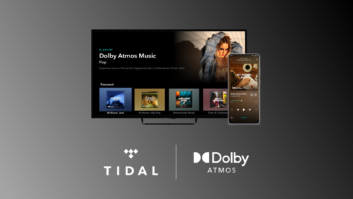I feel a little bit guilty sitting down on my couch here on April 16, in the midst of a stay-at-home order going on five weeks here in Oakland and facing no real end in sight, certainly nothing definitive, with most people expecting a long, rolling comeback from the pandemic and varying types of disruption into 2021.
Things seem bleak in nearly every industry, not just entertainment. And yet… for more than a month Covid-19 has taken up at least a portion of, I would guess, 99 percent of the conversations I’ve had, both personally and professionally. Honestly, sometimes I need a break. And now I feel guilty for saying that out loud.
The pages this month should probably be filled with stories of how artists and engineers are finding new ways of working remotely with a new set of collaborative tools, or how the live sound industry is coping with the devastation, or how an entire year of audio education might move online—and how that might be done.
All of those are much-needed stories and will be written in the days and weeks and months ahead, online and in print. Things will change, no question, from recording to production to performance and everything else. We just don’t know how right now. It’s still happening in real time.
Perhaps that’s just a roundabout way of leading in to this month’s Special Issue and its focus on Dolby Atmos Music, the type of technology that represents the very reasons I’ve come to love the recording and music industries—the spirit of innovation and creativity that, when coupled with innovation in science and technology, can create magic in a room and thunder and lightning on a stage.
Immersive music is coming to the recording industry, no question about it. And before simply dismissing the idea and saying that we’ve been here before, that 5.1 proved a failure and format wars spell ruin, that there is no content so there is no demand, that the labels just want to re-sell the catalog and nobody under 50 cares… I urge you to take some time during your own self-isolation and research the formats. There are countless reasons why this time around is different than 5.1.
First, there’s the fact that, as Art Kelm at Capitol Studios/UMG says, “Now technology is our friend.” That applies to both the means of creating music and to its distribution. Music in 5.1 had physical limitations regarding speaker positioning and the channel-based field. Immersive music does not. Immersive music also translates better up and down the scale, from high-end home theater to the Amazon Echo Studio, released last September with up-firing speakers. Sony 360RA, Dolby and many, many other manufacturers are betting the bank on headphones. It will happen, and the word binaural will become part of the audio vernacular. Also, streaming is song-based. That makes a big difference.
Also, this time around there is a much bigger push behind the launch. Dolby, Universal Music Group/Capitol Studios and speaker manufacturer PMC have been working quietly but diligently for three years now, most of that time under NDA, to figure out how this Dolby Atmos technology, proven in film and television, would work in music. Then they set about remixing songs, not albums, from the back-catalog, along with a sprinkling of new artists. Starting with trial and error. Making up the new workflow. Getting to know about Objects and Beds. About 2500 songs were available, though not always easy to access, by the end of 2019.
While stellar immersive music mixes have been available for years in Dolby Atmos, Auro-3D and DTS:X, all on Blu-ray disc, the mass introduction to the recording industry—and by extension, consumers—really came last fall when Dolby announced deals with Tidal and Amazon Music HD. There are many more deals to be made and frustrations ahead. But keep in mind, though it is here right now, Dolby Atmos Music is still very much in its infancy. The rules are still being made.
Tom Kenny
Editor, Mix
P.S. I fully expect to receive a few emails taking me to task for putting Dolby Atmos Music on the cover, rather than Immersive Music. I certainly understand the point. And the decision wasn’t easy. I’ve been writing about Immersive Audio since 2014, even launched an event based around it. For the music and recording industries, Dolby is the company that has put the time, resources, and money into development and partnerships. And the truth is, I approached them to get the stories. They didn’t approach me.







